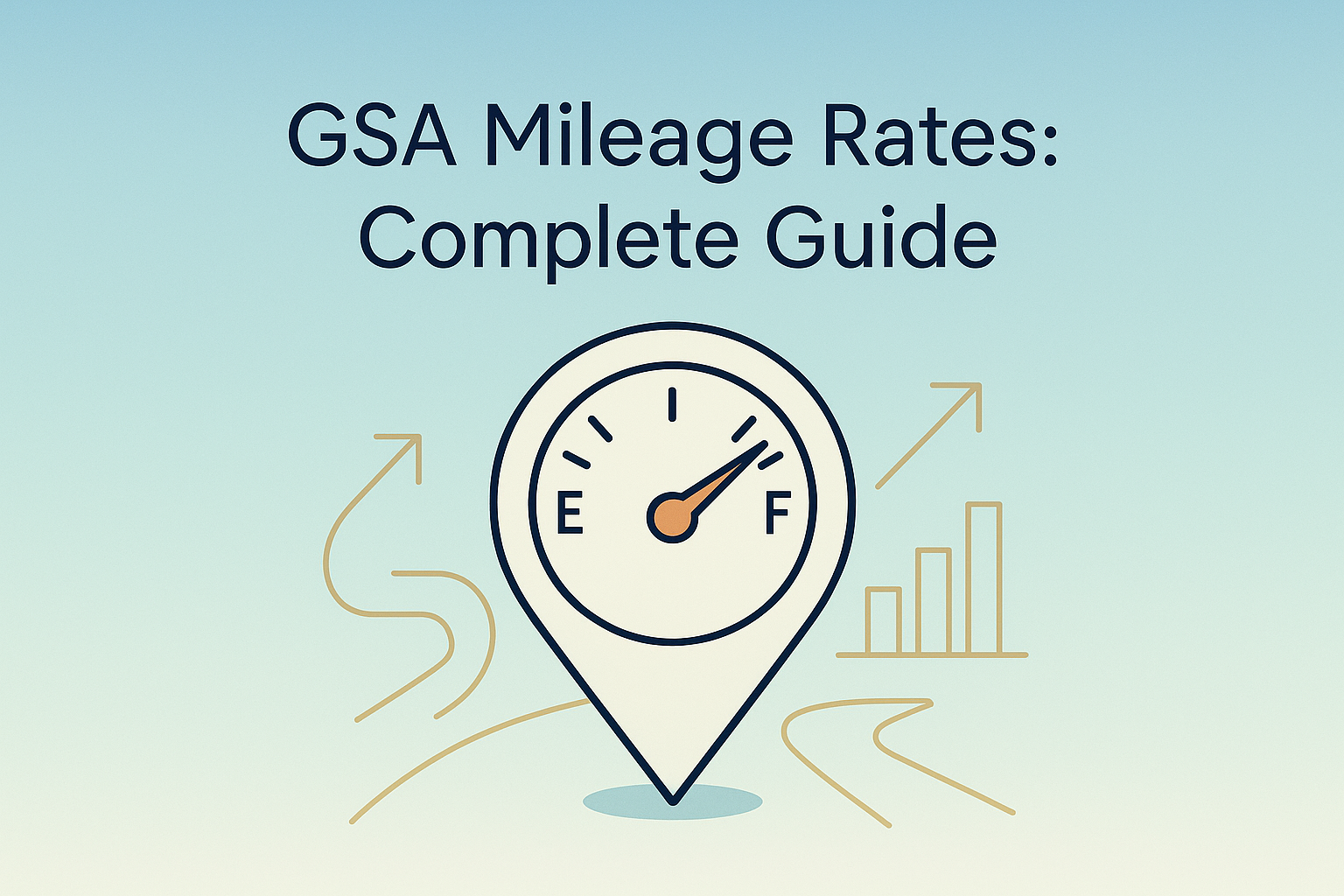2025 GSA Mileage Rates for Reimbursement
Understanding Federal Travel Reimbursement
For federal employees who travel for work, understanding the General Services Administration (GSA) mileage rates is essential to ensuring proper reimbursement. Whether you’re regularly on the road for government business or occasionally use your personal vehicle for official duties, these rates directly impact your finances.
The 2025 GSA mileage rates reflect significant changes from previous years, continuing an upward trend that acknowledges the rising costs of vehicle operation and maintenance. As fuel prices, insurance premiums, and general inflation affect the cost of owning and operating a personal vehicle, the GSA adjusts rates to ensure federal employees receive fair compensation for business travel expenses.
At PlanWell Financial, we understand that managing travel reimbursements is just one aspect of comprehensive financial planning for federal employees. Our team of Chartered Federal Employee Benefits Consultant℠ (ChFEBC℠), CERTIFIED FINANCIAL PLANNER™ (CFP®), and Accredited Investment Fiduciary® (AIF®) professionals uses the Fed-Expert Financial Blueprint to help you integrate every benefit—like mileage reimbursement—into a cohesive retirement strategy. That’s why we’ve created this comprehensive guide to GSA mileage rates for 2025.
Understanding GSA Mileage Rates
The General Services Administration establishes reimbursement rates for federal employees who use privately owned vehicles (POVs) for official government travel. These rates are designed to compensate employees for the costs associated with using personal vehicles for work-related travel, including gas, maintenance, insurance, and depreciation.
The GSA adjusts these rates periodically based on various factors, including fuel prices, vehicle maintenance costs, and overall economic conditions. The rates are typically set for the calendar year but can be adjusted mid-year if circumstances warrant, as happened in 2022 when substantial fuel price increases prompted a mid-year adjustment.
GSA mileage rates vary depending on the type of vehicle used and whether a government vehicle was available. This tiered structure ensures appropriate reimbursement based on the actual expenses likely incurred by the employee.
Official 2025 GSA Mileage Rates
|
Vehicle Type |
2025 Rate |
Conditions |
|---|---|---|
|
Privately owned automobile |
70 cents per mile |
When no government vehicle is available |
|
Privately owned automobile |
21 cents per mile |
When a government vehicle is available |
|
Privately owned motorcycle |
68 cents per mile |
For official travel |
|
Privately owned airplane |
$1.75 per mile |
For official travel |
It’s important to note that these rates differ based on vehicle type and circumstances. When a government vehicle is available but an employee chooses to use their personal vehicle instead, the reimbursement rate is significantly lower. This difference reflects the government’s preference for using government-owned vehicles when possible while still providing some compensation when employees opt for personal vehicles for convenience or other reasons.
Historical Context and Rate Changes
The 2023 GSA mileage rates represent part of a longer-term trend in reimbursement rates. Understanding how these rates have changed over time provides valuable context and can help federal employees anticipate future adjustments.
Recent Historical Rate Changes
|
Vehicle Type |
Jan–Jun 2022 |
Jul–Dec 2022 |
2023 Rate |
|---|---|---|---|
|
Car/Van (no gov’t vehicle) |
58.5 cents/mile |
62.5 cents/mile |
65.5 cents/mile |
|
Car/Van (gov’t vehicle available) |
18 cents/mile |
22 cents/mile |
22 cents/mile |
|
Motorcycle |
56.5 cents/mile |
60.5 cents/mile |
63.5 cents/mile |
|
Airplane |
$1.515/mile |
$1.81/mile |
$1.74/mile |
The 2022 mid-year adjustment was particularly noteworthy because it reflected significant volatility in fuel prices. When gas prices surged dramatically in the first half of 2022, the GSA responded by increasing the mileage reimbursement rate by 4 cents per mile for automobiles when no government vehicle was available.
Longer-Term Historical Perspective
|
Effective Date |
Car/Van (no gov’t vehicle) |
Motorcycle |
|---|---|---|
|
January 1, 2023 |
65.5 cents |
63.5 cents |
|
July 1, 2022 |
62.5 cents |
60.5 cents |
|
January 1, 2022 |
58.5 cents |
56.5 cents |
|
January 1, 2021 |
56.0 cents |
54.0 cents |
|
January 1, 2020 |
57.5 cents |
54.5 cents |
|
January 1, 2019 |
58.0 cents |
55.0 cents |
|
January 1, 2018 |
54.5 cents |
51.5 cents |
|
January 1, 2017 |
53.5 cents |
50.5 cents |
|
January 1, 2016 |
54.0 cents |
51.0 cents |
|
January 1, 2015 |
57.5 cents |
53.0 cents |
Looking Ahead
Understanding the current mileage rate is helpful, but staying informed on future adjustments ensures you continue to maximize your reimbursement. If you travel frequently, bookmark our up-to-date resources—such as the previously released 2024 GSA mileage reimbursement guide—so you’re never caught off guard by a rate change.
Need help weaving travel reimbursements, pensions, TSP savings, and insurance benefits into one cohesive plan? Reach out to PlanWell’s Fed-Expert team to see how our process can help you retire with confidence.












